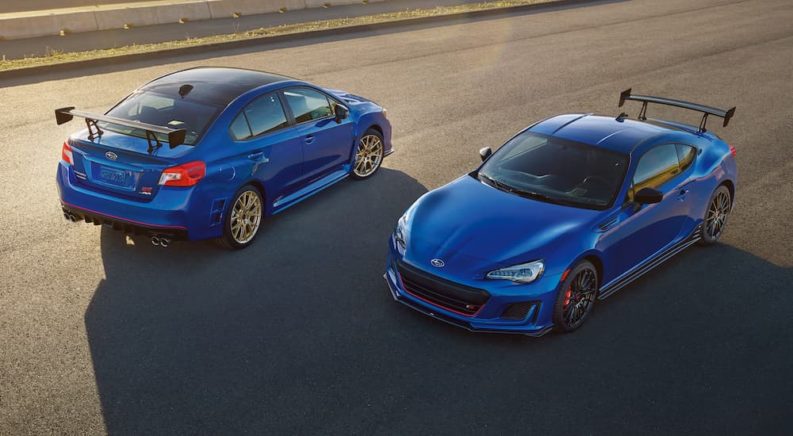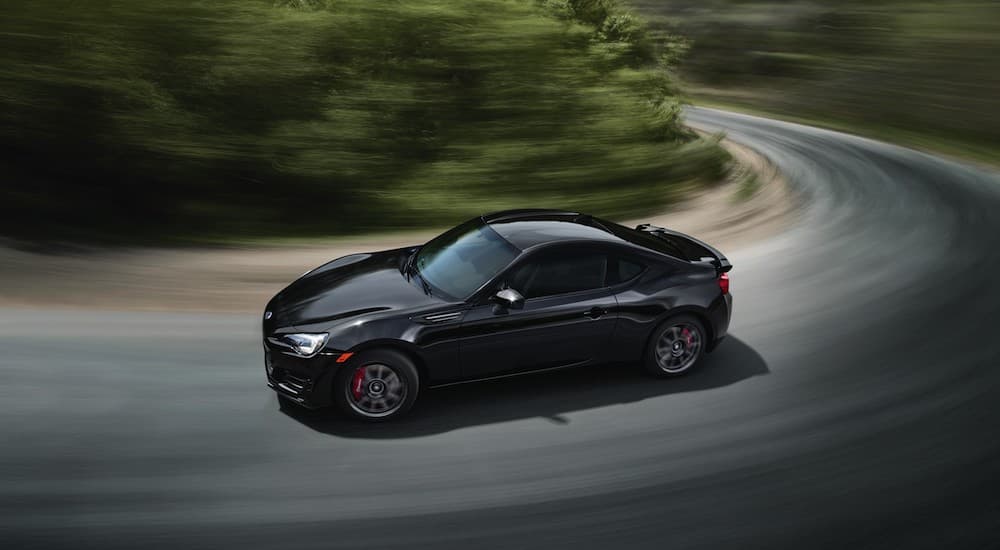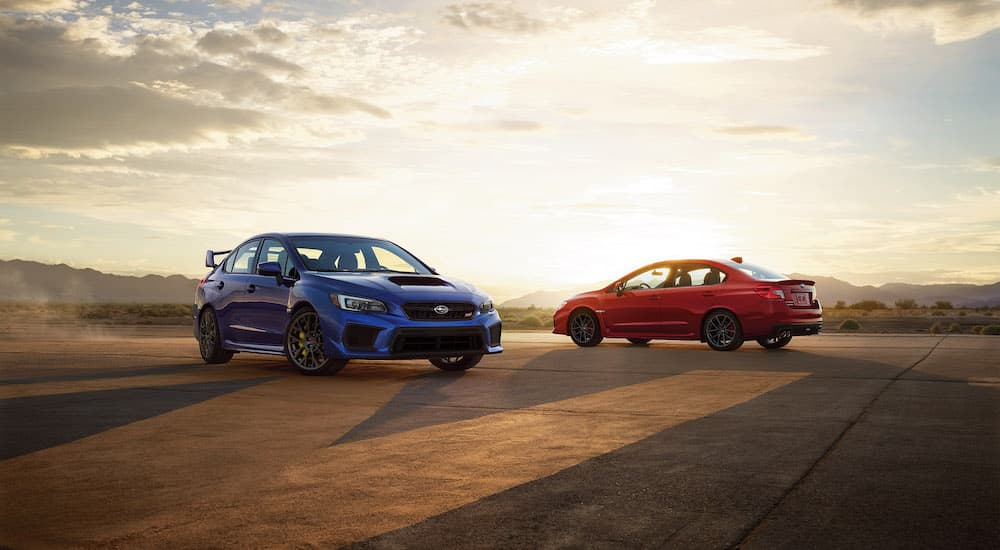There are two kinds of people that drive Subarus: the friendly neighbor who grows their own kale and always lets you borrow their sunscreen, and the under-30-year-olds whose ideal horsepower is dangerously close to the number in their bank accounts. You know the ones. They subscribe to the idea that every time you hit a vape, a Subaru gets its wing. There may be no vehicle manufacturer more adept at creating a practical sports car than Subaru. On the surface, they get a rep for being largely commuter-oriented – no one can output as many wagons and hatchbacks as Subaru and not hit it off with frugal families – but some of the best of what they have to offer is quick enough to give you whiplash when you turn your head to watch one drive by. For Subie enthusiasts on a budget, shopping at a Certified Pre-Owned Subaru dealer may be one of the most pragmatic options for getting a car that’s fun to drive. I know you aren’t rolling in it; otherwise, you’d be buying a Porsche.
What Makes a Subaru, a Subaru?
Subaru is known for manufacturing affordable, reliable vehicles with sound design, but Honda does that too. What makes a Subaru really stand out is its engine. Subaru utilizes a boxer engine, appropriately dubbed the Subaru Boxer Engine. It’s got a flat layout, and the pistons move horizontally instead of vertically, creating a natural balance.
Vehicles with flat engines also have lower centers of gravity, which comes with handling and safety benefits. Despite these perks, boxer engines are far less common than inline and V-type engines, largely due to cost and inconvenience. Boxer engines are efficient in a lot of ways, but spatial awareness is not one of them. They tend to be awkward to cram in and often mean making it difficult to access other components under the hood, driving up maintenance costs. Also driving up maintenance costs is the fact that flat engines have two head gaskets instead of one, making them more susceptible to failure. Despite their trickiness, the performance offered by flat engines is rewarding. They’re a rare breed, one really only championed by Subaru Porsche.
Subaru BRZ
Dai Yoshihara’s LS-swapped 2014 Subaru BRZ is unlike any other BRZ out there. The factory boxer engine I just went on about is good, but it’s obviously not designed for Formula D racing, Yoshihara’s profession. Instead, the Subaru Boxer Engine is traded for a Chevy 7.0 liter turbocharged V8 that gets around 1600 hp – a marked improvement from the 952 hp the V8 cranked out in its first year of competition. This particular BRZ has undergone other transformations as well; it recently got a fresh livery comprised of all of Subaru’s important colors: blue body paint, gold rims, and pink accents.
Subaru loves a good three-letter acronym, and BRZ is my personal favorite. The “B” and “R” signal mechanical components – the boxer engine and rear-wheel drive. The “Z” stands for “zenith,” an astronomical term that is used synonymously with peak or summit. The BRZ may not be a planetary powerhouse or even the fastest car in Subaru’s lineup, but it has a reputation for being fun to drive, thanks to its standard six-speed manual transmission, low center of gravity, and lightweight body. It’s the result of a joint venture between Subaru and Toyota, which also birthed the Toyota 86. The Toybaru (or Subota, if you prefer) twins share almost everything, including a 2+2 body style, RWD, and a naturally-aspirated 2.0 liter flat-four that gets 205 hp.
In 2018, the BRZ tS was released with upgraded parts and tuning designed to improve the feel of the already well-balanced ride. It was again available for the 2020 model year. Those lucky enough to get their hands on the limited release tS will enjoy additional premium Brembo brakes, Michelin sport tires, Sachs dampers, and a carbon fiber spoiler. The second generation debuted for the 2022 model year, and it stays true to everything people love about the BRZ while making adjustments to address consumers’ biggest complaints (lack of power). An all-new naturally-aspirated 2.4 liter flat-four boosts power up to 228 hp.
Subaru WRX
If Subaru was a religion, Colin McRae would be its god. He raced for the Subaru World Team from 1993 to 1998, and in 1995, he made rally racing history as the youngest person to win the World Rally Championship. He was driving the iconic Subaru Impreza 555. The pair led the Subaru World Rally Team to victory for the next two years, cementing their place in the history books. The Subaru Impreza 555 was named so due to its sponsorship from State Express 555, a British brand of cigarettes. The now-famous gold and blue color scheme displayed in the Impreza 555’s livery is borrowed from their sponsor as well, which has become prominent in the Subaru WRX line.
The Subaru WRX started as essentially a trim for the Subaru Impreza, based on the one designed for rally racing. “WRX” stands for “World Rally eXperimental,” which doesn’t exactly follow the laws of capitalization but does roll off the tongue nicely. The WRX was offered as a souped-up version of the Impreza until 2014 when it split from the Impreza line and became its own thing, but that didn’t stop it from donning the blue paint and gold rims made famous by the Impreza 555 and becoming the desktop screensaver of choice for Subie fanboys.
In 2018, the Subaru WRX got major upgrades, including an improved suspension and quieter cabin. It’s powered by a turbocharged 2.0 liter flat-four engine, with 268 hp and 258 lb-ft of torque. The same engine was used for subsequent model years until 2022, when it was upgraded to a turbocharged 2.4 liter flat-four engine, which gets 271 hp and 258 lb-ft of torque. If that doesn’t do it for you, the ante can still be upped with the WRX STI, the high-performing Subaru, with extra emphasis on performance. Details on the 2022 STI have yet to be unveiled, but recent model years are powered by a turbocharged 2.5 liter flat-four. It gets 305 hp and 290 lb-ft of torque. The Subaru WRX has undergone its fair share of changes over its lifespan, but it stays tirelessly true to its rally-racing roots. The new Subaru WRX still has all-wheel drive (AWD) and a six-speed manual transmission.
Subaru Performance: A Lasting Legacy
Subaru has stringent CPO standards. Vehicles have to be less than five years old and have fewer than 80,000 miles. All Subaru CPO’s undergo a 152-point inspection, as well. Subaru CPOs are likely to be a safe bet, and if you can find a BRZ or WRX, it might just be the best money you’ll ever spend on a sports car. Their continued improvement demonstrates Subaru’s continued investment in their performance segment, which is hopefully a good indication that we’ll be able to enjoy these cars for generations to come. There is a turbocharged Subaru Forester available for purchase but, of course, only in Japan. The list of performance Subarus is short and sweet; it makes you wonder if there’s room for expansion.






